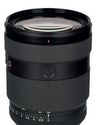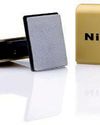
Things have been rather quiet from Panasonic on the Micro Four Thirds lens front just lately. With the company primarily focusing on its full-frame S series output, you'd be forgiven for thinking that its smaller system had been somewhat forgotten.
With the launch of the Panasonic GH6 earlier in the year however, it's perhaps no surprise to see new optics also appearing on the market, and the firm says it's committed to developing and releasing more. Its new 9mm f/1.7 lens is the latest to be made in collaboration with Leica, meaning that the lens must pass a stringent set of standards.
Four Thirds has a crop factor of 2x, so the 9mm lens gives the equivalent angle of view to 18mm on a full-frame camera. Given just how much Panasonic has concentrated on video in the past few years, it seems reasonable to assume that one of this lens's intended consumers is the vlogger, with that focal length being ideal for filming pieces to camera in small spaces, or handheld.
However, it's also a very versatile focal length for plenty of stills applications, with the two most obvious subjects being landscapes and architecture. With its close-focusing skills and large aperture, it can also be used for close-up work or isolating the subject from the background. Similarly, the f/1.7 maximum aperture suggests it should be ideal for low light or night photography too.
With a retail price of £449, the Leica DG Summilux 9mm F1.7 is priced very reasonably. Compared to the Laowa 10mm f/2, for example, it's wider, offers a faster aperture and includes autofocus, but only costs £50 more. It’s also much cheaper than the compact wideangle zooms you can buy for Micro Four Thirds, including the Panasonic 7-14mm f/4 (£799) and the Olympus 9-18mm f/4-5.6 (£549). Of course, this being a Micro Four Thirds lens, it can also be used with Olympus and OM System cameras.
Diese Geschichte stammt aus der August 09, 2022-Ausgabe von Amateur Photographer.
Starten Sie Ihre 7-tägige kostenlose Testversion von Magzter GOLD, um auf Tausende kuratierte Premium-Storys sowie über 8.000 Zeitschriften und Zeitungen zuzugreifen.
Bereits Abonnent ? Anmelden
Diese Geschichte stammt aus der August 09, 2022-Ausgabe von Amateur Photographer.
Starten Sie Ihre 7-tägige kostenlose Testversion von Magzter GOLD, um auf Tausende kuratierte Premium-Storys sowie über 8.000 Zeitschriften und Zeitungen zuzugreifen.
Bereits Abonnent? Anmelden

Calling The Shots: A Queer History of Photography
Offering an unprecedented view of photographic history through a queer lens, this is a wonderful and powerful book, says

Large-aperture standard zoom, too
SONY has also revealed a new premium standard zoom, the FE 28-70mm F2 GM.

Super-fast, high-res Sony Alpha Ai II
SONY has announced its new professional full-frame flagship camera, the Alpha A1 II.

39 awesome accessories
Our round-up of the best accessories we've used and reviewed this year, along with some old favourites. There's something here for every budget, starting from just £7, including tripods, bags, filters and much more

Such a thing as society
This autumn sees the launch of a major new book and exhibition devoted to examining the multiplicities of photography during 1980s Britain. Peter Dench finds out more

Join Club
The sociable Canvey Island Photographic Club is keen to grow its in-person meet ups

Capturing flight
Winners and finalists of Bird Photographer of the Year share their tips for success with Hollie Latham Hucker

140 years of change
AP has become the world’s oldest surviving consumer photo magazine because we have moved with the times, says Nigel Atherton

Preserving history in platinum
A deep dive into the meticulous art of platinum printing, and the collaboration between the Royal Geographical Society and Salto Ulbeek. Mike Crawford explores how they brought historical photographs to life with enduring beauty and precision

Life in the past lane
What was life like for an amateur photographer in 1884? John Wade takes a trip back in time